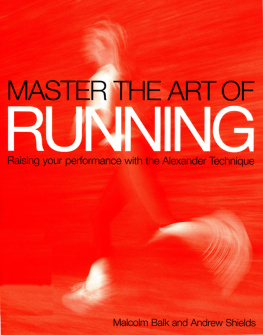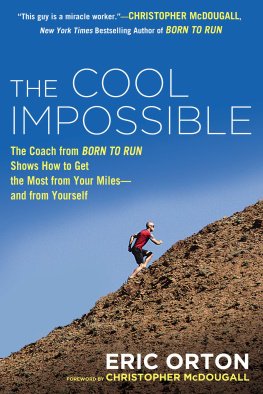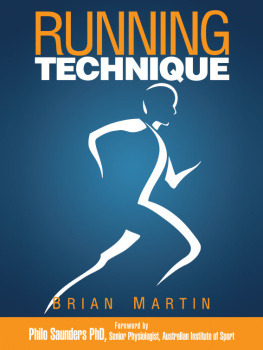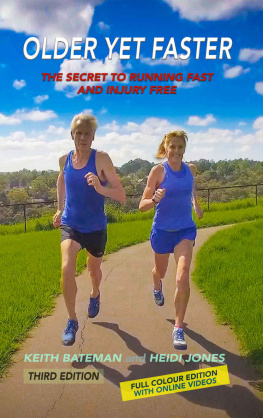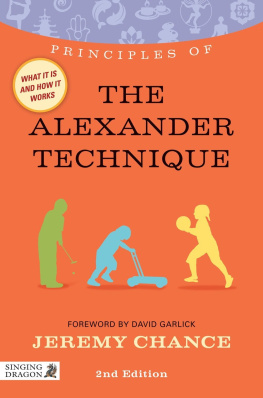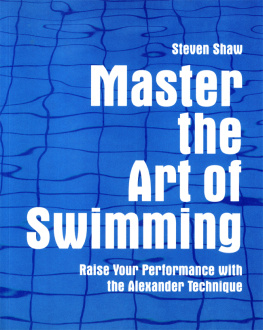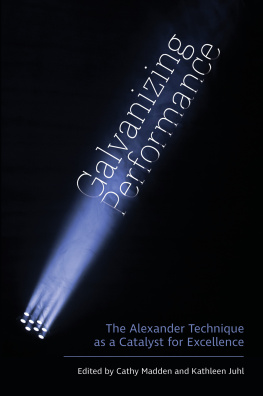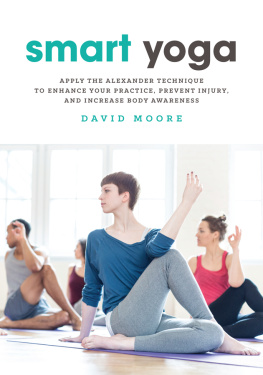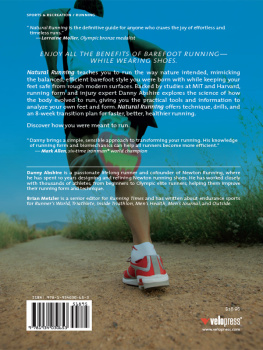MASTER THE ART
OF RUNNING

MASTER THE ART OF RUNNING
Malcolm Balk and Andrew Shields

To the spirit and legacy of Terry Fox
To all the runners I have trained with, competed against and worked with, thanks for helping me become a better runner, coach and person.
To my fellow Alexander teachers for their interest and encouragement, inparticular: Jean Clark, Steven Cooper, Liz Dodgson, Jonathan Drake, Brita Forsstrom, Arie Jan Hoorweg, Carolyn Nichols, Merran Poplar, Roy Palmer, Maggie Rakusen, Steven Shaw, Robin Simmons, Ken and Angela Thompson, Paul Versteeg and Tessa Marwick, and John Woodward. Particular thanks to Dr Nicholas Romanov, originator of the Pose Method of running, for his ability to think outside the box and inspire a new generation of runners. To Marilyn Arsenault, thanks for working with me on the Pose Method. To Dave and Tina for a base on the Grove.
A very special thanks to my wife Pamela and 2020
Olympic 800 m champion, my son Milo. Malcolm Balk
To Mark Harrod, Roger Mallett and Brigitte Wrenn of Central YMCA for support and forbearance, particularly when important keys end up on the wrong side of the Atlantic. To Julia Armstrong and fellow coaches with the London Active Partnership and Ilford Athletic Club, thanks for your encouragement and stimulating discussions.
Particular thanks to my endlessly patient wife Elaine and children Helen, Isabel and Matthew. Andrew Shields
Both authors would like to thank those runners who contributed case studies to this book. Also Brad Thompson of Ashgrove Publishing for his commitment to our original vision of The Art of Running.
CONTENTS
INTRODUCTION
Running is the greatest metaphor for life, because you get out of it what you put into it. Oprah Winfrey
Why do we run? First and foremost, we run because it gives us pleasure. It makes us feel good about ourselves, and about the world in general. We run to enjoy the feeling of movement, to overcome inertia, to begin to flow. We run to do battle with our demons, real and imagined. We run to improve our fitness and well-being. We run to transcend the elements, to renew ourselves, to connect with the beauty and energy and vibrancy of life. Some of us run to compete, and maybe to win.
Staying present
Every run should be different, and the way we react to each run can be a matter of choice or creation. For example, when I ran today, I noticed that my right hamstring felt tight. As I ran, I kept monitoring my leg and also noticed how it was affecting my overall form. It caused me to tighten my back and run more heavily than I wished. So I decided to stop and give my body some direction. I pointed myself upwards, encouraged my knees and ankles to release, and started again. Soon my stride was smoother and I was breathing more freely. A distance of 100 m (328 ft) further on, I stopped again to repeat the process. Picking up the pace, I noticed that my hamstring was starting to release, but still gave me an occasional twinge. I continued, but later, as I was doing some accelerations, I noticed that my hamstring had let go and was now part of my overall sense of falling upwards and forwards. I pressed on with the days workout, taking care not to let its demands overwhelm my kinaesthetic ear and my decision to flow rather than force my way through each repetition.
I have completed a version of that workout many times, but today it was an experience that demanded my creative intelligence just to do it. It was an illustration of running as an act of creativity: staying present, responding thoughtfully to the situation, taking calculated risks, and finding a different way to achieve your goal.

For some people, however, running can become tedious just another item to be ticked off on the list of the days tasks. And when any activity becomes routine, no matter what it is, boredom and blindness set in and we wish we were somewhere else doing something more exciting.
One sign that an activity is becoming routine is a tendency to distance yourself from what you are doing. Distance doesnt mean the healthy detachment that allows you to see what is going on with greater clarity, less interference and more control. Rather its the semi-comatose, trance-like state we can easily slide into, especially when we are doing something weve done a thousand times before. Who doesnt remember the thrill of getting behind the wheel of a car for the first time, putting it into gear and steering uncertainly round an empty car park. Is driving anything like that today?
When running becomes just a means to an end whether thats fitness, fame or fat reduction it loses the features that elevate it from being just another mundane activity. When we cut our minds off from what we are doing and simply mechanically repeat a movement over and over again, without interest or curiosity, without thought and without intention, we reduce both the experience and ourselves in the process. We are no longer immersed in the moment. Instead, we simply want to get it done. As Oprah says in the quotation at the start of this chapter, running is there for us to do with as we please. We can approach it with enthusiasm and zest, eager to see each run as an opportunity for learning and self-discovery. Or we can approach it half-heartedly, reluctant to push ourselves physically and emotionally, content to stay within the confines of previous experience. Its the latter group, uncertain of what they are doing and why, who become bored and uninspired and tend to give up.
The art of running
Is running boring? It can be if you let it. It is far better to approach running as an art, with skills to be learned and practised. The art of running is to be found in the process, and it needs to be recreated every time you run. It doesnt matter what you did yesterday, or even what you did two minutes ago its always the next step that counts. The quality of the experience is what matters most.
The Alexander Technique
When running is approached as an art, rather than as a technique, a science or a means to fitness, it takes on a whole new dimension. First of all, the runners motivation changes. The emphasis is less on targets such as winning a race or breaking a preordained time, and more on the process of exploration and enhanced awareness that running offers. That is the theme of this book, which is underpinned by the principles of the Alexander Technique, developed by Frederick Alexander. The Technique is a method for teaching us how to develop conscious control over our reactions, which can be the source of unproductive and involuntary patterns of movement and behaviour. These automatic reactions are habits that we fall into without thinking the most fundamental being a tendency to pull the head back and down and thus distort the balanced relationship between the head, neck and back. The Technique teaches us to reassert effective command over the way we think and act, helping to unlearn the habits of a lifetime. Through this psychophysical reintegration, we can begin to get back in touch with our selves. For runners, the benefits are obvious.
Alexander also believed that when we become overly preoccupied with results, we lose touch with the process. He called this end-gaining. Its an attitude so widespread in our society that it is almost normal (although certainly not natural). Getting back in touch with the process puts us in the moment, and each moment is a little different from the one before it.

